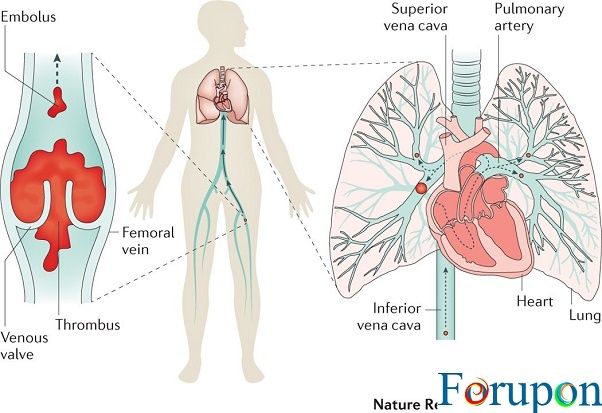What are the Signs of a Pulmonary Embolism?
Symptoms of a Pulmonary Embolism: For upon |A pulmonary embolism occurs when there is a blockage in one of the pulmonary arteries in your lungs. The blood clot often travels to the lungs from your legs and can cause severe damage to your heart and lungs. When there is a blood clot, it will block oxygen and blood cells, and this can affect the other organs as well. The body needs to continually have blood flowing throughout it to ensure that there are enough oxygen and red blood cells throughout the organs. Symptoms of a Pulmonary Embolism.
While PE can be life-threatening, if you are aware of the risks and symptoms of a blood clot, you can significantly reduce your risk of death.
Causes and Risk Factors of PE
Your body knows how to properly form blood clotting to prevent you from bleeding out whenever you get an injury or cut yourself. The body also knows how to break down the blood clots so that there is no blockage in an artery or vessel. However, there are times when your body is unable to get rid of the blood clot, causing a pulmonary embolism. Symptoms of a Pulmonary Embolism.
While anyone can develop a blood clot, there are potential risk factors for a pulmonary embolism that you need to be aware of, and they include:
-
Family history – family members who have had venous blood clots or pulmonary embolisms in the past put you at a higher risk of developing PE.
-
Heart disease – if you suffer from cardiovascular disease, clots are more likely to form
-
Cancer – Increase your levels of substances that help your blood clot; this includes chemotherapy which can put you at a higher risk.
-
Surgery – The leading cause of blood clots.
-
Immobility – Blood clots are more likely to form during long periods of inactivity.
Other risk factors to be aware of also include:
-
Smoking – combined with other risk factors, can cause blood clots to form.
-
Being overweight – increases your risk of a blood clot, especially in women who smoke or have high blood pressure.
-
Pregnancy – Clots are more likely to form because the weight of the baby presses on the veins in your pelvis and can slow the blood returning from your legs.
Symptoms of PE
Symptoms of a pulmonary embolism will vary depending on the size of the blood clot, how much of your lung is involved, and if you suffer from other lung or heart problems Some of the most common symptoms include Symptoms of a Pulmonary Embolism.
-
Shortness of breath – This happens suddenly and gets worse when you exert yourself.
-
Chest pain – You feel like you’re having a heart attack. The pain increases when you cough, breathe deeply, eat, or bend over.
-
Cough – It may be bloody or have blood streaks in your sputum.
Other symptoms of a pulmonary embolism may also include:
-
Pain and/or swelling in your leg, usually your calf
-
Clammy, redness, or discolored skin (cyanosis)
-
Irregular or rapid heartbeat
-
Weak pulse
-
Fever
-
Excessive sweating
-
Lightheaded or dizzy
-
Low blood pressure
If you are experiencing any of these symptoms, especially shortness of breath, chest pain, or a cough with blood-tinged sputum, you should seek medical attention immediately. Symptoms of a Pulmonary Embolism.
Treatment for PE
The treatment for PE all depends on the severity of your pulmonary embolism. Once your doctor has given you the diagnosis of PE, you will have different treatment options available to you. These treatment options include Symptoms of a Pulmonary Embolism.
Blood thinners
Final Note
Knowing the signs and symptoms of a potential PE is vital to make sure you seek treatment in time. If you are at risk for a blood clot, make sure you discuss this with your doctor. Symptoms of a Pulmonary Embolism.


Comments are closed.